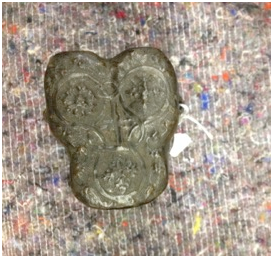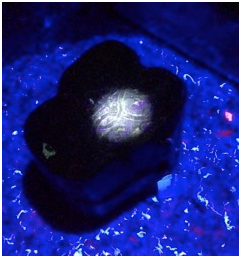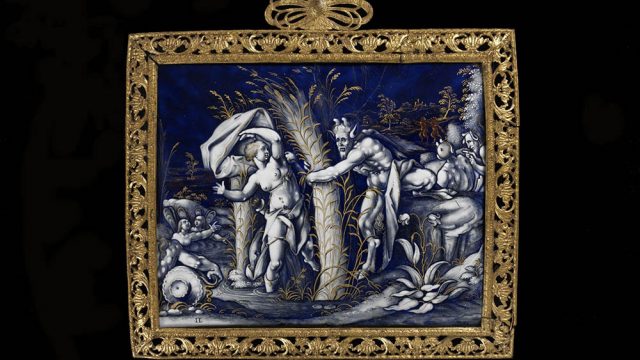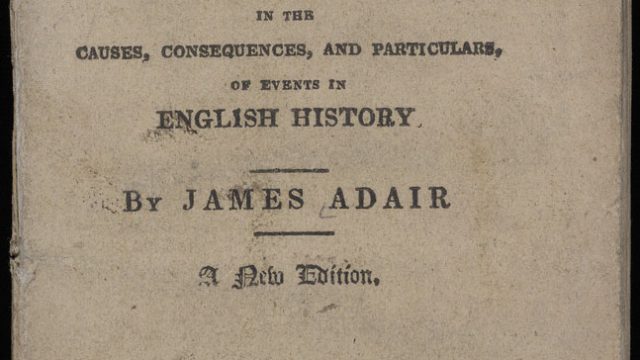This post was written by second-year student, Letitia Calin, one of a group of V&A/RCA History of Design MA students participating in the ‘Thinking and Experiencing Techne’ seminar/lab.
Early on in the ‘Thinking and Experiencing Techne’ seminar and lab course of the V&A/RCA History of Design MA we investigated a selection of early modern objects in the V&A’s Furniture and Woodwork Collection more closely than we had ever been able to before. In exploring the history of their making and their material composition, we were guided by curator of Furniture Nick Humphrey, senior conservators Dana Melchar and Nigel Bamforth, and a particular technology: ultraviolet light.
Ultraviolet – or UV – light allows conservators to understand the composition and material properties of the surfaces of objects, which in turn helps them determine how best to preserve them. Ultraviolet radiation causes materials to fluoresce in different ways depending on their properties. Looking at varnishes under UV light, for example, offers clues as to their composition and age.


Our close attention to the objects’ surfaces under UV light revealed the eloquence of materiality. The various objects we looked at told different stories of varnish and paint application, material substitutions or subsequent retouching. Like forensic detectives, we were able to read the layered stories inscribed in objects, which are hidden from the naked eye. Under the black light the complex processes and materials found on their surfaces became legible.
Aided by material science analysis, we gained a new kind of knowledge. We grew to understand the surface finishes of these objects as aggregations of liquids of various origins and chemical compositions. In this way, material things held a new value for us, as design historians: we could now see these objects as protagonists in stories of physical processes that had taken place in the past.
Click here for the previous blog from the ‘Techne’ seminar/lab series.
To see what else V&A/RCA History of Design students have been up to, read our other blog posts, check our pages on the RCA website and take a look at Un-Making Things, a student-run online platform for all things design history and material culture.
You can find out how to apply for 2017/18 admission to MA V&A/RCA History of Design here.


